Today’s Current Affairs: 7th March 2023 for UPSC IAS exams, State PSC exams, SSC CGL, State SSC, RRB, Railways, Banking Exam & IBPS, etc
Table of Contents
Emergency Credit Line Guarantee Scheme (ECLGS) : Extension

The Union government is looking at a possible extension of the Emergency Credit Line Guarantee Scheme (ECLGS) amid global economic uncertainty and expectation of slower domestic growth next fiscal.
- Emergency Credit Line Guarantee Scheme (ECLGS) was launched by the Government of India in 2020 as a special scheme in view of the Covid-19 crisis.
- Objective is to provide 100 percent guaranteed coverage to the banks, non-banking financial institutions (NBFCs), and other lending institutions to extend emergency credit to business entities that have suffered due to the Covid-19 pandemic and are struggling to meet their working capital requirements.
- ECLGS is under the operational domain of the Ministry of Finance, Department of Financial Services (DFS).
- National Credit Guarantee Trustee Company Ltd (NCGTC) has been set up by the Union Ministry of Finance to manage and provide guarantees to these loans.
- ECLGS was launched in different phases – ECLGS 1.0, ECLGS 2.0, ECLGS 3.0, and ECLGS 4.0. In different phases, the scope of this scheme was increased to include multiple sectors.
- Sanctions/disbursements are made by lending institutions based on assessment of the borrower’s requirements and eligibility.
- Processing charges, foreclosure, and prepayment charges are waived under the scheme..
Nano Liquid DAP Fertilizer : Approved

The Government recently approved the launch of nano liquid DAP (di-ammonium phosphate) fertilizer in India and has been notified in the Fertilizer Control Order (FCO).
- Nano liquid DAP fertilizer is a concentrated phosphate-based fertilizer.
- It provides phosphorous nutrition throughout the crop growth and development cycle.
- Nano-DAP is jointly manufactured by Indian Farmers Fertiliser Cooperative (IFFCO) in association with a private player Coromandel.
- Nano-DAP will be sold at Rs 600 per bottle of 500 ml. One bottle will be equivalent to one bag of DAP, which currently costs Rs 1,350.
- DAP is the second most consumed fertilizer in the country after urea.
- Out of the estimated annual consumption of around 10-12.5 million tonnes, local production is around 4-5 million tonnes, while the rest has to be imported.
- Nano-DAP will help to bring down India’s fertilizer import bill.
- It is also expected to contribute to bringing down the annual subsidy on non-urea fertilizers.
United Nations High Seas Treaty:

After more than a decade of negotiations, the countries of the United Nations have recently agreed to the High Seas Treaty.
- UN High Seas Treaty is the first-ever treaty to protect the world’s oceans that lie outside national boundaries.
- It is also known as the ‘Paris Agreement for the Ocean.’
- It is a legally binding treaty to protect marine life in international waters.
- It aims to place 30% of the seas into protected areas by 2030 (a pledge made by countries at the UN biodiversity conference in 2022).
- It will provide a legal framework for establishing vast marine protected areas (MPAs) to protect against the loss of wildlife and share out the genetic resources of the high seas.
- It also covers environmental assessments to evaluate the potential damage of commercial activities, such as deep-sea mining.
- It will establish a conference of the parties (CoP) that will meet periodically and enable member states to be held to account on issues such as governance and biodiversity.
- The treaty also includes a pledge by signatories to share ocean resources.
- The treaty is built on the legacy of the UN Convention on the Law of the Sea (UNCLOS), which is the last international agreement on ocean protection, signed 40 years ago in 1982. UNCLOS established an area called the high seas.
Swachh Sujal Shakti Samman 2023:

The President of India presented the Swachh Sujal Shakti Samman 2023 and graced the launch of Jal Shakti Abhiyan: Catch The Rain -2023 in New Delhi.
- Catch the Rain is a Jan Andolan campaign to encourage all stakeholders to create rainwater harvesting structures (RWHS).
- Tag line: Catch the rain, where it falls, when it falls.
- Swachh Sujal Shakti Samman’ is to highlight and acknowledge the leadership and contribution of women at the grass-root level in the journey towards making a ‘Swachh Sujal Bharat’.
- The women achievers who have contributed exceptionally to ODF Plus Model Villages, Har Ghar Jal Villages, Water Conservation, etc. under the National Flagship Missions were felicitated.
- This year’s event was organized by the Union Ministry of Jal Shakti to honour the women champions of the rural water and sanitation sector.
Megha-Tropiques-1:
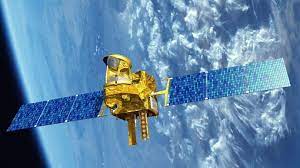
The Indian Space Research Organisation (ISRO) will be undertaking a challenging experiment of a controlled re-entry of the decommissioned Megha-Tropiques-1 (MT1) satellite on March 7, 2023.
- Megha-Tropiques is an Indo-French Joint Satellite Mission for studying the water cycle and energy exchanges in the tropics.
- Objective is to understand the life cycle of convective systems that influence tropical weather and climate and their role in the associated energy and moisture budget of the atmosphere in tropical regions.
- It provides scientific data on the contribution of the water cycle to the tropical atmosphere, with information on condensed water in clouds, water vapour in the atmosphere, precipitation, and evaporation.
- With its circular orbit inclined 20 deg to the equator, the Megha-Tropiques is a unique satellite for climate research that should also aid scientists seeking to refine prediction models.
- The Megha-Tropiques has day, night and all-weather viewing capabilities; it passes over India almost a dozen times every day, giving scientists an almost real-time assessment of the evolution of clouds.
ILO-UNICEF Report:
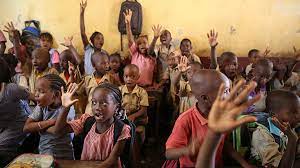
ILO (International Labour Organization) and UNICEF (United Nations Children’s Fund) has released a report titled- “More than a billion reasons: The urgent need to build universal social protection for children”, which states that just 1 in 4 children are shielded by social protection, leaving others exposed to poverty, exclusion and multidimensional deprivations.
Findings :
- 1.77 billion children aged 0-18 years lack access to a child or family cash benefit, a fundamental pillar of a social protection system.
- Children are twice as likely to live in extreme poverty as adults.
- Approximately 800 million children are subsisting below the poverty line of USD 3.20 a day, and 1 billion children are experiencing multidimensional poverty.
- Only 26.4% of children aged 0-15 years are shielded by social protection, leaving the remaining 73.6% exposed to poverty, exclusion and multidimensional deprivations.
- Globally, all 2.4 billion children need social protection to be healthy and happy.
- Child and family social protection coverage rates fell or stagnated in every region in the world between 2016 and 2020, leaving no country on track to achieve the Sustainable Development Goals (SDG) of achieving substantial social protection coverage by 2030.
- In Latin America and the Caribbean, coverage fell significantly from approximately 51% to 42 %.
- In many other regions, coverage has stalled and remains low.
- Multiple crises are likely to push more children into poverty, necessitating an immediate increase in social protection measures.
- The impacts of lack of social protection for children are both immediate and lifelong, heightening rights violations such as child labour and child marriage, and diminishing children’s aspirations and opportunities.
International Maritime Exercise/ Cutlass Express 2023:
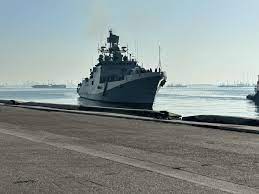
INS Trikand is participating in the International Maritime Exercise/ Cutlass Express 2023 (IMX/CE-23) being held in the Gulf region from 26 Feb to 16 Mar 23.
INS Trikand:
- It is a frontline frigate equipped with a versatile range of weapons and sensors.
- The ship is a part of the Indian Navy’s Western Fleet, based in Mumbai.
- It belongs to the Talwar class of guided missile frigates.
- It was built by the Yantar shipyard in Kaliningrad, Russia.
International Maritime Exercise/ Cutlass Express 2023:
- It is one of the largest multinational maritime exercises in the world.
- While this is Indian Navy’s maiden IMX participation, it also marks the second occasion where an Indian Naval ship is participating in an exercise conducted by the combined maritime forces.
- The newest iteration of Cutlass Express will primarily be carried out in Djibouti, Kenya and Mauritius.
- It will feature a series of shore-based and at-sea training activities that will take place along the eastern coast of Africa.
- It aims to bolster regional security and stability in the Western Indian Ocean.
- Participating nations will include the US, Canada, Djibouti, Madagascar, Mozambique, Mauritius, the UK, Japan, Tanzania, Seychelles, France, Kenya, Georgia, Comoros and Greece.
Great Seahorse Migration:
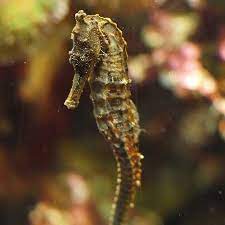
A study indicated that extensive fishing off the Coromandel coast could be forcing the great seahorse to migrate towards Odisha.
- Sea horses are tiny fish that are named for the shape of their head, which looks like the head of a tiny horse. They are classified as fish, in the genus Hippocampus.
- There are 46 species of seahorses reported worldwide. The coastal ecosystems of India house 9 out of 12 species found in the Indo-Pacific.
- They are found in shallow coastal waters in latitudes from about 52° N to 45°S.
- Seahorse populations in India are distributed across diverse ecosystems such as seagrass, mangroves, macroalgal beds, and coral reefs.
- These 9 species are distributed along the coasts of eight States and five Union Territories from Gujarat to Odisha, apart from Lakshadweep and the Andaman and Nicobar Islands.
- Conservation Status:
- IUCN status-Vulnerable
- CITES: Appendix II
Bamboo Crash Barrier:
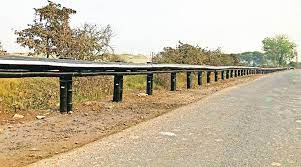
The world’s first 200-meter-long Bamboo Crash Barrier, named Bahu Balli, has been installed on the Vani-Warora Highway in Maharashtra, India.
- The bamboo species used is Bambusa Balcoa, which has been treated with creosote oil and coated with recycled High-Density Poly Ethylene (HDPE).
- It Will create more avenues for the bamboo industry in India and it provides an alternative to steel barriers, addresses environmental concerns, and is a rural and agriculture-friendly industry.
- Bamboos are a diverse group of mostly evergreen perennial flowering grasses (it is no longer considered a ‘tree’ in India).
- Madhya Pradesh is the largest producer of bamboo in India.
- More than 50% of the bamboo species are found in northeast India alone.
- China has the largest diversity (India’s the 2nd largest) and is the largest producer of Bamboo in the world.
- India is the 2nd largest producer of Bamboo in the world.
Organoid Intelligence:

Scientists at Johns Hopkins University (JHU) recently outlined a potentially revolutionary new area of research called “organoid intelligence”, which aims to create “biocomputers”.
- Bio computers are computing devices that use biological components such as DNA, proteins, and cells to perform computational tasks. Biocomputers use the properties of biological systems to perform computations, such as molecular recognition, self-assembly, and amplification.
- Researchers coupled the organoids with machine learning by growing the organoids inside flexible structures affixed with multiple electrodes (similar to the ones used to take EEG readings from the brain).
- These structures will be able to record the firing patterns of the neurons and also deliver electrical stimuli, to mimic sensory stimuli.
- The response pattern of the neurons and their effect on human behaviour or biology will then be analyzed by machine-learning techniques.
CO2 Emissions Report 2022:IEA

According to the CO2 Emissions in 2022 Report by the International Energy Agency
- Global energy-related CO2 emissions increased by less than 1% in 2022
- The report highlights rise in emissions was significantly lower than the exceptional increase of over six per cent in 2021.
- It recommended stronger steps to accelerate the clean energy transition to achieve energy and climate goals.
- According to the report, emissions in China decreased in 2022 due to the COVID lockdown.
- In the European Union, emissions decreased by 2.5%.
- In the US, emissions increased by 0.8%.
- The Carbon emissions from the fuel coal increased by 1.6%.
- The emissions from oil increased by 2.5%.
- The aviation sector was the major polluter in this fuel category.
- In the energy sector, the major emissions came from electricity generators, particularly coal-based electricity generators. Solar energy and wind energy power plants increased throughout the world.
- The emissions from the global industries decreased.
- The main reason behind the reduction was a 10% decrease in cement production and a 2% decrease in steel production
- The overall price of energy increased, fuel trade was disrupted, and inflation hit peaks. For these reasons, the overall emissions decreased
- Emissions due to natural gas decreased by 1.6%
Hunger Funding Gap Report : By Action Against Hunger

A report titled “2023 Hunger Funding Gap Report: What’s Needed to Stop the Global Hunger Crisis” was released recently by Action Against Hunger, a global humanitarian organisation.
- According to this report, countries witnessing the worst hunger crisis received less hunger funding than countries with lower rates of hunger.
- The number of people facing hunger crises has increased to 18 per cent at a rate faster than the funding provided to address this issue.
- Though the overall funding to address hunger has risen in 2022, the support was spread thinner.
- The report noted a hunger funding gap of 53%.
- In 2022, only 3 per cent of hunger programme needs were fully funded.
- Around 65 per cent of appeals were not fulfilled even to a halfway point.
- 47% of the global hunger needs are met through UN funds.
- This leaves the Hunger Funding Gap at 53%.
- The countries that are facing the worst hunger crisis receive the least amount of funds.
- Mozambique and Kenya received 32% higher funding than Afghanistan and Haiti.
- The hunger crisis in the former is less than that of the latter
- Countries with Worst Hunger Crisis: Afghanistan, Haiti, Central African Republic, Madagascar, Honduras, Ethiopia, Pakistan, Somalia, Kenya, Mozambique, Guatemala




